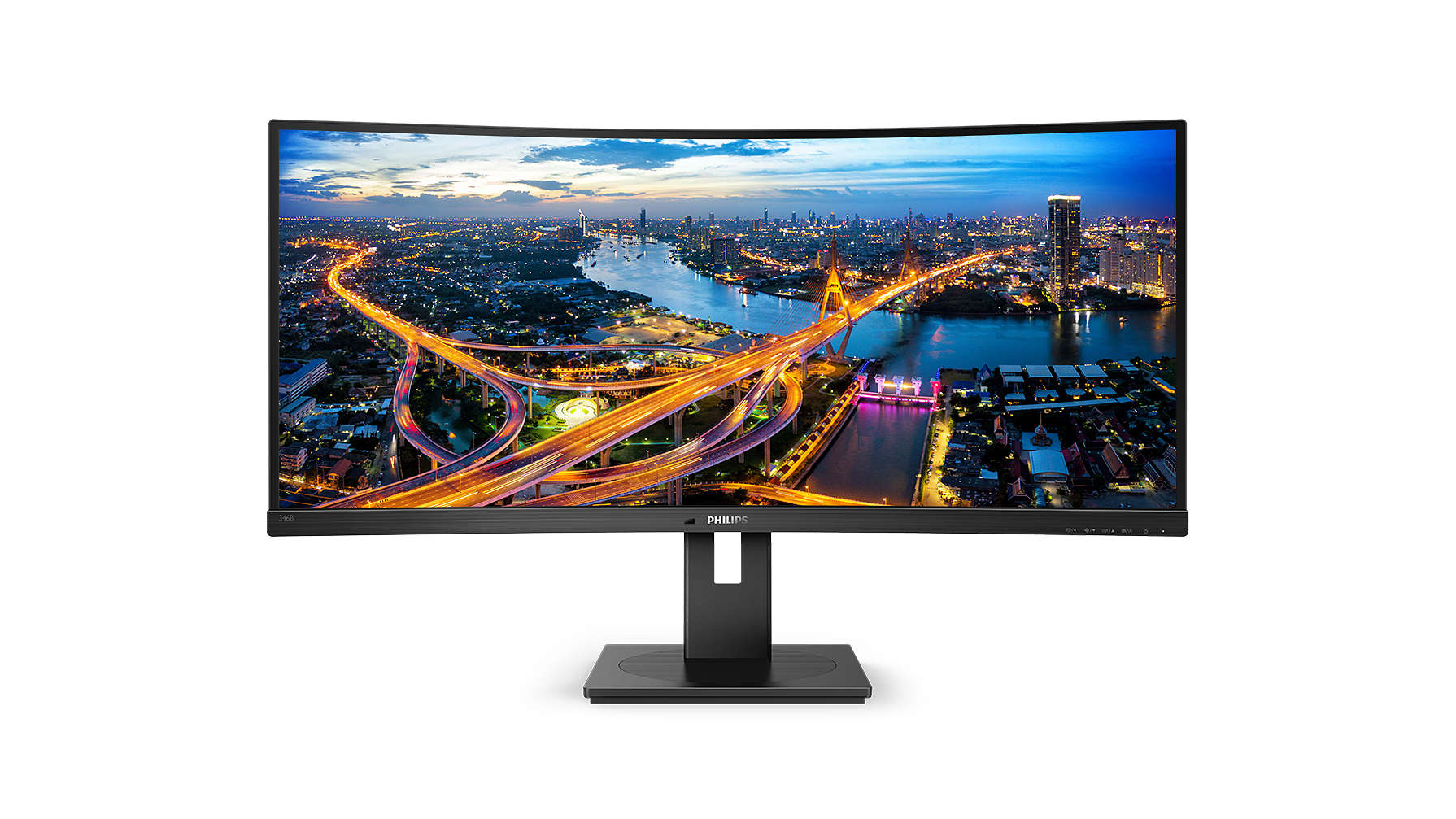Philips Brilliance 346P1C review: A brilliant choice
The curved Brilliance lives up to its name, defeating all-comers in the process


-
+
Outstanding whites
-
+
Blazing brightness
-
+
Support for multiple PCs
-
+
Robust port choices
-
-
Overly cool default colour temperature

In recent years, IPS technology has largely replaced VA panels as the de facto standard for high-end monitors, and for good reason. One of the drawbacks of VA technology compared to IPS is that the latter offers greater clarity when displaying whites - normally, that is. The Philips Brilliance 346P1C bucks the trend, with a white that’s almost as good as the best IPS screens; were it not for the pronounced 1800R curvature of this screen - a hallmark of VA - we’d almost believe this was an IPS display.
To enjoy the panel at its best, pump it up close to full brightness (a searing 463cd/m2), or switch to sRGB mode. This locks it to 452cd/m2, which sounds as if it would scorch your eyes but is actually quite pleasant. It covers 92% of the sRGB gamut with a 95% volume, with a fine average Delta E of 0.92. The one quirk is that its colour temperature is 7108K, which lends colours a blue tinge. Thankfully, you can head into the speedy and responsive OSD to tweak this if you wish.
For gaming, Philips offers support for AMD FreeSync, refresh rates up to 100Hz and respectable 4ms response times. You can also jump straight to the Game SmartImage preset via the shortcut button on the (rather thick) lower bezel, with a selection of other presets, too: from mono EasyRead and Photo to SmartUniformity. The latter supposedly helps with contrast and brightness deviation, but we didn’t find it particularly effective or indeed necessary: an average brightness variation of 6.4% is one of the better results you’ll find in this category.
We recommend trying out the LightSensor, though, which adjusts the brightness based on ambient light. There are more features to play with too. The Windows Hello 1080p webcam, which tucks out of the way when not in use, produces detailed results, and there’s a four-port USB hub and an RJ-45 port for wired networking.
The latter is only useful if you take advantage of the USB-C connector, which delivers up to 90W of power – enough for the hungriest of laptops. You can daisy chain a second monitor via DisplayPort, or connect a second PC to this monitor via the DisplayPort or HDMI 2.0 input. Philips provides a selection of picture-in-picture modes, but the most useful option is a picture-by-picture mode that splits the screen equally in two; thanks to the integrated KVM switch, multiple devices can share the same keyboard and mouse plugged into one of the four USB-A 3 ports on the left-hand side of the monitor.
If you don’t need all these features, or indeed USB-C connectivity, then take a look at the cheaper Iiyama ProLite XUB3493WQSU-B1, which like the Brilliance enjoys a high-quality and flexible (albeit not the most elegant) stand and excellent speakers. If you’re looking for a curved 34in panel that has it all, though, The Philips 346P1C is a brilliant choice.
Philips Brilliance 346P1C specifications
| Screen size | 34in |
| Screen resolution | 3,440 x 1,440 |
| Screen technology | VA |
| Screen refresh rate | 100Hz |
| Video inputs | 1x DisplayPort 1.4, 1x HDMI 2.0, 1x USB-C (90W) |
| Audio inputs/outputs | 3.5mm headphone jack |
| Speakers | 2x 5W |
| Ports | 1x RJ-45, 1x USB-B, 4x USB-A 3, |
| Adjustability | 180mm height adjustment, -5°/+25° tilt, 360° swivel |
| Dimensions | 807 x 250 x 421-601mm |
| Weight | 11.7kg |
| Warranty | 3yr RTB |
Sign up today and you will receive a free copy of our Future Focus 2025 report - the leading guidance on AI, cybersecurity and other IT challenges as per 700+ senior executives
Tim Danton is editor-in-chief of PC Pro, the UK's biggest selling IT monthly magazine. He specialises in reviews of laptops, desktop PCs and monitors, and is also author of a book called The Computers That Made Britain.
You can contact Tim directly at editor@pcpro.co.uk.
-
 Trump's AI executive order could leave US in a 'regulatory vacuum'
Trump's AI executive order could leave US in a 'regulatory vacuum'News Citing a "patchwork of 50 different regulatory regimes" and "ideological bias", President Trump wants rules to be set at a federal level
By Emma Woollacott Published
-
 Microsoft Excel is still alive and kicking at 40 – and it's surging in popularity as 82% of finance professionals report ‘emotional attachment’ to the spreadsheet software
Microsoft Excel is still alive and kicking at 40 – and it's surging in popularity as 82% of finance professionals report ‘emotional attachment’ to the spreadsheet softwareNews A recent survey found Gen Z and Millennial finance professionals have a strong “emotional attachment” to Microsoft Excel
By Emma Woollacott Published
-
 LastPass hit with ICO fine after 2022 data breach exposed 1.6 million users – here’s how the incident unfolded
LastPass hit with ICO fine after 2022 data breach exposed 1.6 million users – here’s how the incident unfoldedNews The impact of the LastPass breach was felt by customers as late as December 2024
By Emma Woollacott Published
